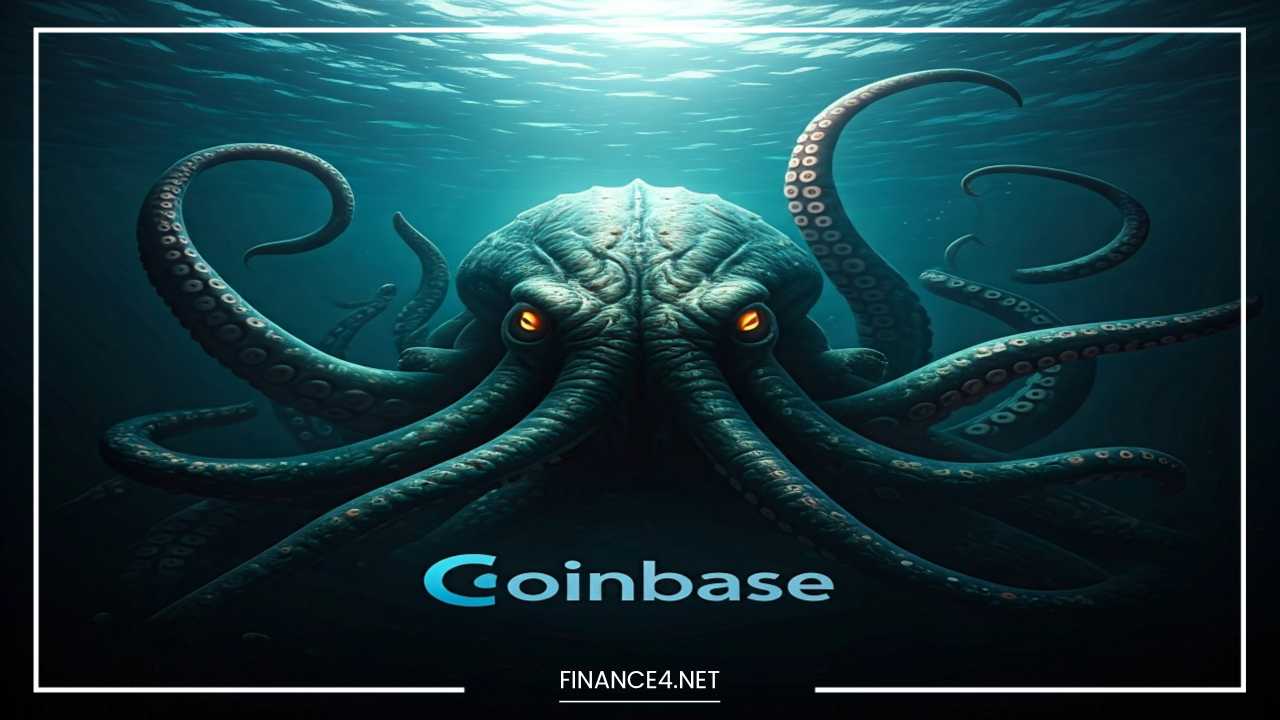Kraken vs. Coinbase

Kraken vs. Coinbase
Kraken vs. Coinbase: A Comprehensive Comparative Analysis
In the dynamic and often volatile world of cryptocurrency, selecting the right platform for trading, investing, and managing digital assets is essential.
With numerous exchanges available, two of the most prominent players in the market are Kraken and Coinbase.
Both of these platforms are well-regarded for their user-friendly interfaces, robust security protocols, and extensive cryptocurrency offerings. However, they cater to different types of users and have unique features that set them apart.
This comprehensive comparative analysis aims to explore various aspects of Kraken and Coinbase, including their fee structures, supported cryptocurrencies, user experience, security measures, and additional features.
By examining these facets in detail, this analysis will help you determine which platform best aligns with your individual trading and investment needs.
Fee Structures and Cost Analysis
Kraken: Competitive and Tiered
Kraken is renowned for its competitive fee structure, which is particularly advantageous for high-volume traders. The platform employs a tiered fee system where trading fees decrease as the user’s trading volume increases.
This model rewards frequent traders and institutional investors with lower costs, which can significantly impact overall profitability, especially for those engaging in substantial or frequent transactions.
Fee Breakdown
- Trading Fees: Kraken’s fee structure is divided into maker and taker fees. Makers, who provide liquidity by placing limit orders, typically incur lower fees compared to takers, who remove liquidity by placing market orders. As of the latest updates, the fee structure starts at 0.16% for makers and 0.26% for takers, with the potential to decrease based on 30-day trading volume. For high-volume traders, the fees can drop to as low as 0.00% for makers and 0.10% for takers.
- Deposit and Withdrawal Fees: Kraken offers fee-free deposits and withdrawals for several cryptocurrencies, which adds another layer of cost efficiency. However, fees may apply to fiat currency transactions and certain digital assets, depending on the payment method and currency used.
- Staking Fees: For users interested in staking, Kraken charges a fee on staking rewards. This fee varies depending on the cryptocurrency being staked and typically ranges from 1% to 2.5%.
Coinbase: Simplistic Yet Costly
Coinbase adopts a more straightforward and transparent fee structure, which can be advantageous for users who value simplicity. However, this approach can result in higher costs, particularly for frequent traders.
Fee Breakdown
- Trading Fees: Coinbase charges a spread of about 0.5% for cryptocurrency transactions, in addition to a separate fee based on the transaction amount and payment method. The fees range from $0.99 for transactions under $10, to $2.99 for transactions between $10 and $25. For transactions over $200, the fee is 1.49% of the transaction amount if using a bank account or Coinbase USD Wallet, or 3.99% if using a debit card or PayPal.
- Deposit and Withdrawal Fees: Coinbase offers free deposits for bank accounts and cryptocurrency transfers. However, withdrawals to a bank account are generally free, while cryptocurrency withdrawals might incur network fees, which vary depending on the cryptocurrency being withdrawn.
- Pro Platform Fees: For higher volume traders, Coinbase Pro (formerly GDAX) provides a more cost-effective fee structure with lower maker and taker fees. Fees on Coinbase Pro start at 0.50% for both makers and takers but decrease with increased trading volume.
Supported Cryptocurrencies
The range of supported cryptocurrencies on an exchange is a crucial factor that can influence trading and investment opportunities. Kraken and Coinbase offer access to a broad spectrum of digital assets, but their selections differ in scope and variety.
Kraken: Extensive and Diverse
Kraken is known for its extensive list of supported cryptocurrencies, which includes a broad array of altcoins and tokens beyond the mainstream assets. This extensive range caters to traders and investors interested in exploring a diverse set of digital assets.
Key Features
- Altcoins and Tokens: Kraken supports a wide range of altcoins, including popular choices like Ripple (XRP), Chainlink (LINK), and Polkadot (DOT), as well as less mainstream tokens. This variety allows users to explore emerging cryptocurrencies and diversify their portfolios.
- Futures and Margin Trading: Kraken offers futures and margin trading for several cryptocurrencies, providing additional trading options for advanced users. This feature allows users to trade with leverage, amplifying potential returns and risks.
- Vetting Process: Kraken’s listing process involves thorough vetting, which adds a layer of assurance regarding the quality and reliability of the assets available on the platform. This rigorous approach helps to mitigate the risks associated with less established cryptocurrencies.
Coinbase: Focused and Selective
Coinbase, while also offering a variety of cryptocurrencies, tends to focus on more mainstream and established assets.
The platform includes major cryptocurrencies such as Bitcoin, Ethereum, and Litecoin, as well as a selection of other prominent tokens.
Key Features
- Mainstream Assets: Coinbase’s focus on well-known cryptocurrencies ensures that users have access to assets with higher liquidity and stability. This focus can be beneficial for users who prefer trading more established digital assets with a track record of performance.
- Educational Resources: For those interested in learning more about supported cryptocurrencies, Coinbase provides educational resources and detailed information about each asset, which can help users make informed investment decisions.
- Limited Altcoins: While Coinbase’s curated selection ensures quality, it may be a limitation for users seeking a broader range of digital assets or those interested in newer or niche cryptocurrencies. Coinbase’s more selective approach can be seen as a drawback for traders looking to explore a wider spectrum of digital assets.
User Experience
User experience is a crucial factor in determining the overall appeal of a cryptocurrency exchange. Both Kraken and Coinbase strive to offer intuitive platforms, but they cater to different types of users with varying levels of technical expertise.
Kraken: Advanced and Customizable
Kraken is celebrated for its advanced trading features and customizable interface, making it particularly popular among experienced traders.
The platform provides a wide range of tools designed for sophisticated trading strategies.
Key Features
- Advanced Tools: Kraken offers advanced charting tools, technical analysis indicators, and a customizable trading dashboard. These features enable users to execute complex trading strategies and analyze market trends in detail.
- Customization: Users can personalize their trading interface to suit their preferences, which can enhance the overall trading experience. The ability to customize charts, layouts, and trading tools provides flexibility and efficiency for advanced users.
- Learning Curve: While Kraken’s depth of features is advantageous for experienced traders, it can be overwhelming for beginners. The platform’s complexity may result in a steeper learning curve, requiring new users to invest time in learning how to navigate and utilize the available tools.
Coinbase: User-Friendly and Accessible
Coinbase is known for its user-friendly interface and simplicity, making it accessible to users who may be new to cryptocurrency trading.
The platform is designed with ease of use in mind, providing a streamlined experience for users with varying levels of technical knowledge.
Key Features
- Intuitive Design: Coinbase’s interface is clean and straightforward, with features that are easy to navigate. This design ensures that users can quickly and efficiently execute trades and manage their assets without the need for extensive technical knowledge.
- Educational Resources: Coinbase offers educational resources and tutorials to help users understand the basics of cryptocurrency trading and investing. These resources include articles, videos, and guides that cater to users at different levels of expertise.
- Simplicity: Coinbase’s focus on simplicity and ease of use makes it an attractive option for beginners who prioritize a straightforward trading experience. The platform’s user-friendly design helps users quickly become familiar with the fundamentals of cryptocurrency trading.
Security Measures
Security is a paramount concern in the cryptocurrency world, where the risk of cyber threats and hacking attempts is ever-present. Both Kraken and Coinbase have implemented robust security measures to protect user funds and data.
Kraken: Strong Security Protocols
Kraken has built a strong reputation for its security measures, employing industry-standard practices to safeguard user assets and data.
Key Features
- Two-Factor Authentication (2FA): Kraken uses two-factor authentication (2FA) to add an extra layer of security to user accounts. This feature requires users to provide a second form of verification in addition to their password, reducing the risk of unauthorized access.
- Cold Storage: A significant portion of user funds on Kraken is stored in cold storage, which means that the assets are kept offline and away from potential online threats. This approach enhances security and minimizes the risk of cyberattacks.
- Security Audits: Kraken undergoes regular security audits conducted by independent firms. These audits help ensure that the platform adheres to best practices and maintains a secure trading environment.
- Additional Security Features: Kraken provides additional security features such as withdrawal whitelists, which restrict withdrawal addresses to approved addresses, and account activity notifications, which alert users to any unusual account activity.
Coinbase: Comprehensive Security Measures
Coinbase also prioritizes security and has implemented a range of measures to protect user accounts and assets.
Key Features
- Two-Factor Authentication (2FA): Coinbase uses two-factor authentication (2FA) to enhance account security. This feature adds an extra layer of protection by requiring users to verify their identity with a second form of authentication.
- Cold Storage: Like Kraken, Coinbase stores the majority of user funds in cold storage to protect against online threats. This practice helps safeguard assets from potential cyberattacks.
- Insurance Coverage: Coinbase has introduced insurance coverage for digital assets held in custody. This insurance provides users with an additional layer of protection, offering peace of mind in case of security breaches.
- Historical Security Incidents: While Coinbase has experienced security incidents in the past, these events have been relatively rare compared to industry standards. The platform’s ongoing efforts to enhance security and protect user assets help mitigate risks and maintain user trust.
Additional Features and Services
Beyond core trading functionalities, both Kraken and Coinbase offer additional features and services that can enhance the overall user experience and provide added value.
Kraken: Advanced Tools and Investment Opportunities
Kraken offers several additional features designed for advanced users and those seeking diverse investment opportunities.
Key Features
- Staking: Kraken’s staking service allows users to earn rewards by participating in the staking of certain cryptocurrencies. Staking rewards can provide users with a passive income stream from their holdings.
- Margin Trading: Kraken offers margin trading, enabling users to trade with leverage. This feature allows traders to amplify their potential returns and risks, making it suitable for those comfortable with advanced trading strategies.
- Futures Trading: Kraken provides futures trading for several cryptocurrencies, allowing users to speculate on the future price movements of digital assets. This feature adds an extra dimension to trading and investment strategies.
Coinbase: User-Centric Features and Educational Initiatives
Coinbase has expanded its offerings to include features that cater to a broader audience and enhance the overall user experience.
Key Features
- Coinbase Wallet: Coinbase Wallet is a decentralized wallet that allows users to store their digital assets off-exchange. This feature provides users with more control over their assets and enhances security by reducing reliance on exchange custody.
- Coinbase Earn: Coinbase Earn is a program that rewards users with cryptocurrency for learning about different digital assets. This educational initiative helps users expand their knowledge while providing opportunities to earn rewards.
- Recurring Buys and Price Alerts: Coinbase offers features such as recurring buys and price alerts to help users manage their investment strategies. Recurring buys allow users to automate their purchases, while price alerts keep users informed about market movements.
- Advanced Trading Options: Coinbase Pro provides advanced trading options, including lower fees and more sophisticated trading tools, catering to users who require additional functionality beyond what is available on the standard Coinbase platform.
Final Thoughts
Choosing between Kraken and Coinbase ultimately depends on individual preferences, trading goals, and levels of expertise.
Kraken stands out for its advanced features, extensive range of supported cryptocurrencies, and tiered fee structure that benefits high-volume traders.
The platform’s depth of tools and diverse asset list make it an appealing choice for experienced traders and those seeking a comprehensive trading environment.
On the other hand, Coinbase excels in providing a user-friendly experience, simplicity, and a curated selection of cryptocurrencies.
Its educational resources and intuitive interface make it an excellent choice for beginners and users who prioritize ease of use over advanced trading features.
Both platforms offer robust security measures and additional features that enhance the overall trading experience.
To make an informed decision, users should carefully evaluate their specific needs, considering factors such as fees, supported cryptocurrencies, user experience, and security.
By conducting thorough research and assessing these aspects, users can select the cryptocurrency exchange that best aligns with their trading and investment objectives, ensuring a more informed and satisfactory experience in the ever-evolving world of digital assets.



